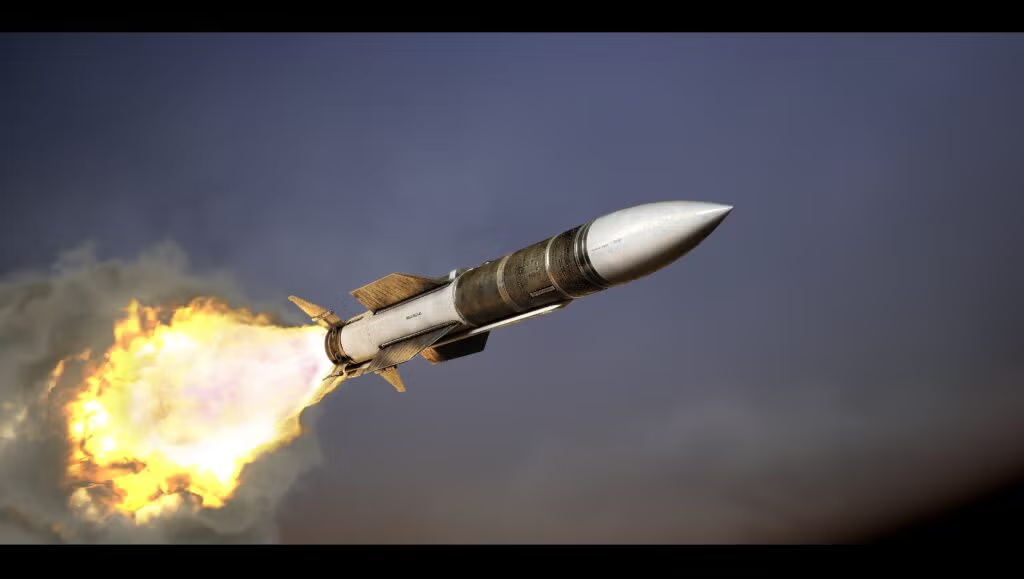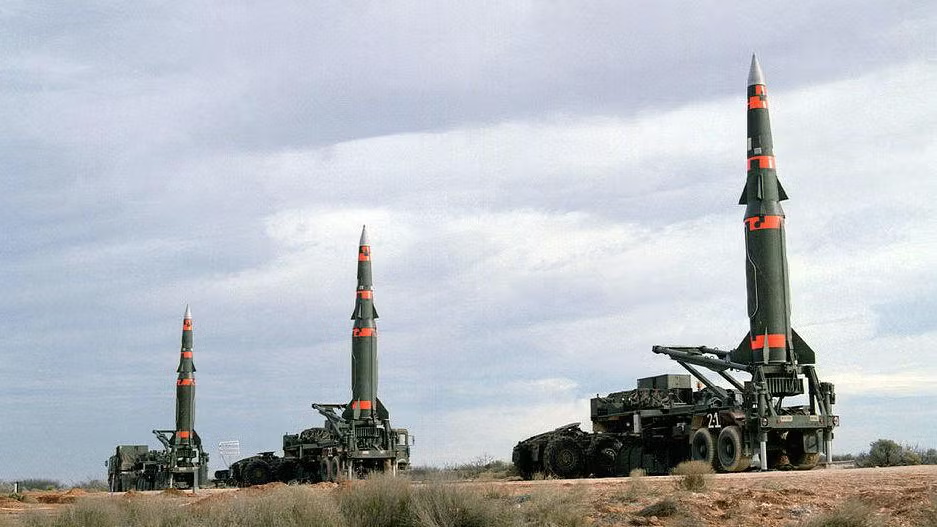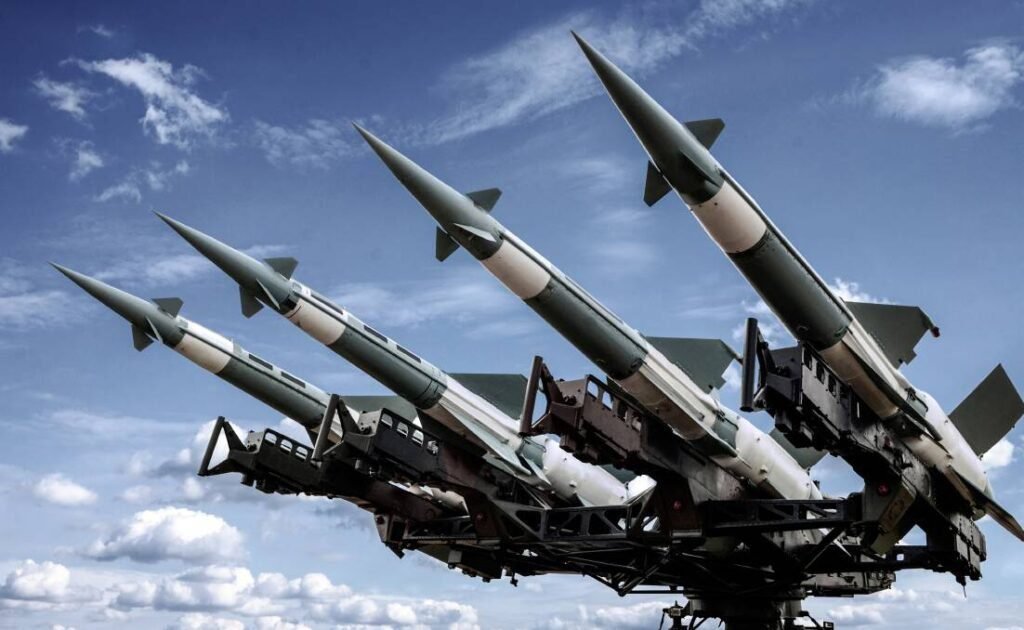Missiles—once the symbols of Cold War dread—have evolved into central components of modern military and strategic doctrine. From the early days of World War II’s V-2 rocket to the hypersonic glide vehicles of today, missile technology has advanced in complexity, range, and destructive potential. The race for missile supremacy is no longer limited to the United States and Russia; it now includes regional powers like China, India, Pakistan, North Korea, and even emerging defense players in the Middle East and East Asia. In this column, we explore the history of missile development, the different types and classifications of missile systems, and the strategic implications of missile proliferation in the 21st century.
The journey of modern missiles began in the early 20th century, but it was during World War II that they first demonstrated their strategic potential. Nazi Germany’s V-2 rocket, developed under the leadership of Wernher von Braun, was the world’s first long-range guided ballistic missile. Though primitive by today’s standards, it marked the beginning of a new era of warfare—one where targets hundreds or thousands of kilometers away could be hit with unprecedented precision and devastation.
Following the war, the United States and the Soviet Union seized German missile experts and began intensive development of their own missile systems. The Cold War that ensued saw an arms race focused heavily on Intercontinental Ballistic Missiles (ICBMs) capable of delivering nuclear warheads across continents. The 1960s and 1970s saw a rapid proliferation of missile technology, with innovations such as Multiple Independently targetable Reentry Vehicles (MIRVs), submarine-launched ballistic missiles (SLBMs), and surface-to-air missile (SAM) systems.
Classification of Missiles

Missile systems are typically classified based on range, launch platform, and mission objective. The primary classification by range includes:Short-Range Ballistic Missiles (SRBMs) – Range less than 1,000 km
Medium-Range Ballistic Missiles (MRBMs) – Range between 1,000 and 3,000 km Intermediate-Range Ballistic Missiles (IRBMs) – Range between 3,000 and 5,500 km Intercontinental Ballistic Missiles (ICBMs) – Range over 5,500 km
Cruise Missiles: Powered by jet engines, capable of flying at low altitudes with high precision. Examples include the U.S. Tomahawk and Russia’s Kalibr.Surface-to-Air Missiles (SAMs) and Air-to-Air Missiles (AAMs): Used for aerial defense and interception.
Anti-Ship Missiles (ASMs): Designed to strike naval vessels, such as the Harpoon or BrahMos.Hypersonic Missiles: Emerging technology capable of speeds exceeding Mach 5. These include glide vehicles like Russia’s Avangard and China’s DF-ZF.Each category plays a distinct role in a nation’s defense strategy, influencing both conventional and nuclear doctrines.
Missile Powers and Strategic Doctrines


The United States and Russia hold the largest and most advanced missile arsenals globally. With a legacy rooted in Cold War competition, both countries maintain strategic triads composed of land-based ICBMs, SLBMs, and strategic bombers. The U.S. maintains its Minuteman III ICBMs, while Russia operates newer platforms such as the RS-28 Sarmat and Avangard hypersonic system.
Both nations continue to modernize their arsenals. Russia has aggressively developed hypersonic technologies, claiming they can evade U.S. missile defenses. The U.S., while slower to adopt hypersonic weapons, has heavily invested in missile defense systems such as THAAD (Terminal High Altitude Area Defense) and Aegis Ballistic Missile Defense.
China’s missile program, under the People’s Liberation Army Rocket Force (PLARF), has evolved into one of the most formidable in the world. China’s DF-series missiles range from SRBMs like the DF-11 to ICBMs such as the DF-41. Notably, the DF-17 hypersonic glide vehicle is designed to evade missile defenses, while China’s anti-ship ballistic missiles (ASBMs) like the DF-21D are often dubbed “carrier killers,” posing threats to U.S. naval assets in the Indo-Pacific.
India and Pakistan


India and Pakistan have developed robust missile programs due to their enduring strategic rivalry. India’s Agni series of ballistic missiles includes ICBM-class Agni-V, capable of reaching targets in China and beyond. The country also maintains cruise missiles like the BrahMos and has invested in anti-satellite weapons and missile defense systems.
Pakistan, meanwhile, has fielded a variety of nuclear-capable missiles like the Shaheen and Ghauri series. With shorter ranges but greater mobility, Pakistan’s arsenal emphasizes second-strike capability and regional deterrence, especially vis-à-vis India. The country has also tested the Babur cruise missile and continues to enhance the accuracy and survivability of its delivery systems.
Despite international sanctions, North Korea has rapidly advanced its missile technology. From the Hwasong-15 and Hwasong-17 ICBMs to submarine-launched ballistic missiles like the Pukguksong-3, Pyongyang has demonstrated growing ambitions to reach not just regional adversaries, but even the U.S. mainland. These developments raise serious concerns for regional stability in East Asia.
Israel maintains a policy of nuclear ambiguity but is believed to possess nuclear-capable missiles such as the Jericho series. It also deploys the Iron Dome and Arrow systems for missile defense.
Iran’s missile program includes a range of SRBMs and MRBMs, such as the Shahab and Sejjil series, alongside cruise missiles and drones. Despite lacking nuclear weapons, Iran’s missiles serve as key tools for regional influence and deterrence, particularly in its confrontations with Israel, Saudi Arabia, and the United States.
The Role of Missile Defense Systems

As missile technology proliferates, so too does the need for effective defense mechanisms. Systems like Israel’s Iron Dome and David’s Sling have proven remarkably successful against short-range threats. The U.S.-developed Patriot and THAAD systems provide layered defense against SRBMs and MRBMs, while the Aegis BMD system extends coverage to naval vessels.
Russia’s S-400 and new S-500 systems offer long-range air and missile defense with multi-target engagement capabilities, and have gained popularity among countries like India and Turkey.
However, as hypersonic weapons and stealth technologies advance, traditional missile defenses face growing limitations. Future defenses may depend increasingly on directed-energy weapons, space-based sensors, and AI-driven tracking systems.
Historically, missile systems have been governed by arms control agreements like the Strategic Arms Reduction Treaty (START), the Intermediate-Range Nuclear Forces (INF) Treaty, and the Missile Technology Control Regime (MTCR). However, many of these frameworks have eroded in recent years.
The U.S. withdrew from the INF Treaty in 2019, citing Russian violations. Meanwhile, China has not been a party to most existing treaties, raising calls for broader multilateral frameworks. The New START Treaty, the last major arms control pact between the U.S. and Russia, has been extended to 2026 but its future remains uncertain amid growing geopolitical tensions.
As missile technology spreads to more actors—state and non-state—arms control efforts face unprecedented challenges.
Missiles in the Future of Warfare


The future of missile systems is being shaped by innovation and uncertainty. Hypersonic weapons, autonomous targeting, artificial intelligence, and space-based platforms are redefining what missiles can do and how wars will be fought.
Hypersonic missiles, due to their speed, maneuverability, and low flight paths, present a nearly insurmountable challenge to existing defense systems. China, Russia, and the United States are leading the charge, while countries like India and Japan are catching up.
Missiles are also being integrated with cyber and space-based assets. Communication satellites, GPS systems, and remote sensing are essential for real-time target acquisition and mission control. The vulnerability of space assets to kinetic or cyber-attacks further complicates the strategic landscape.
Missiles remain a paradox in international security: they are tools of deterrence, yet also harbingers of destruction. As nations pursue missile capabilities to enhance their security, they often trigger countermeasures and arms races that escalate regional and global tensions.
The challenge for the global community lies in balancing national defense needs with arms control, strategic stability, and non-proliferation efforts. In the absence of effective diplomacy and trust-building, missiles will continue to define the contours of future conflicts—not just in terms of firepower, but in shaping the geopolitics of the 21st century.
By [Faizan Hussain]
